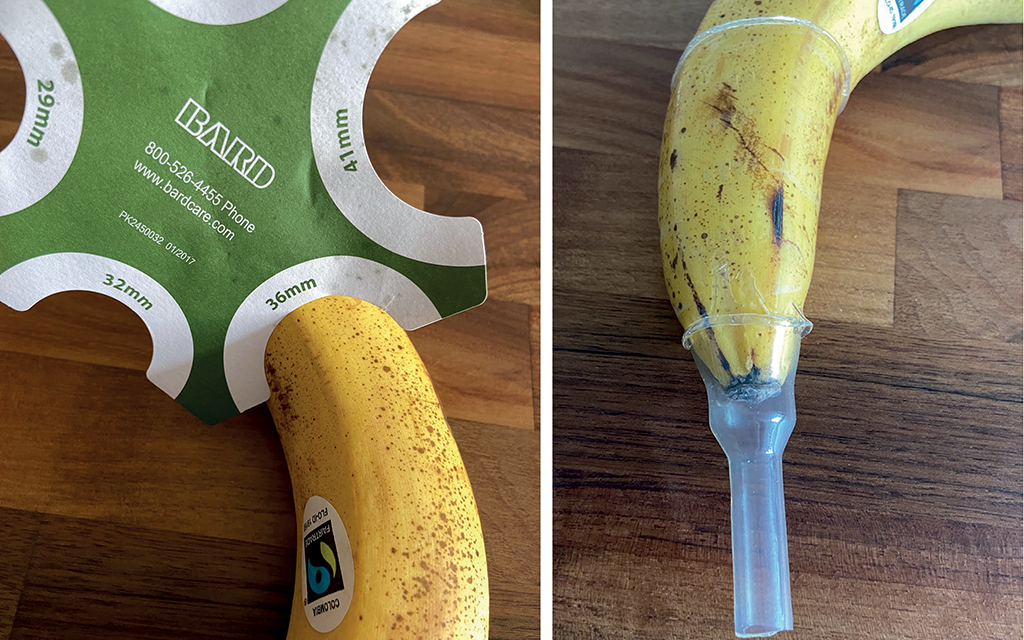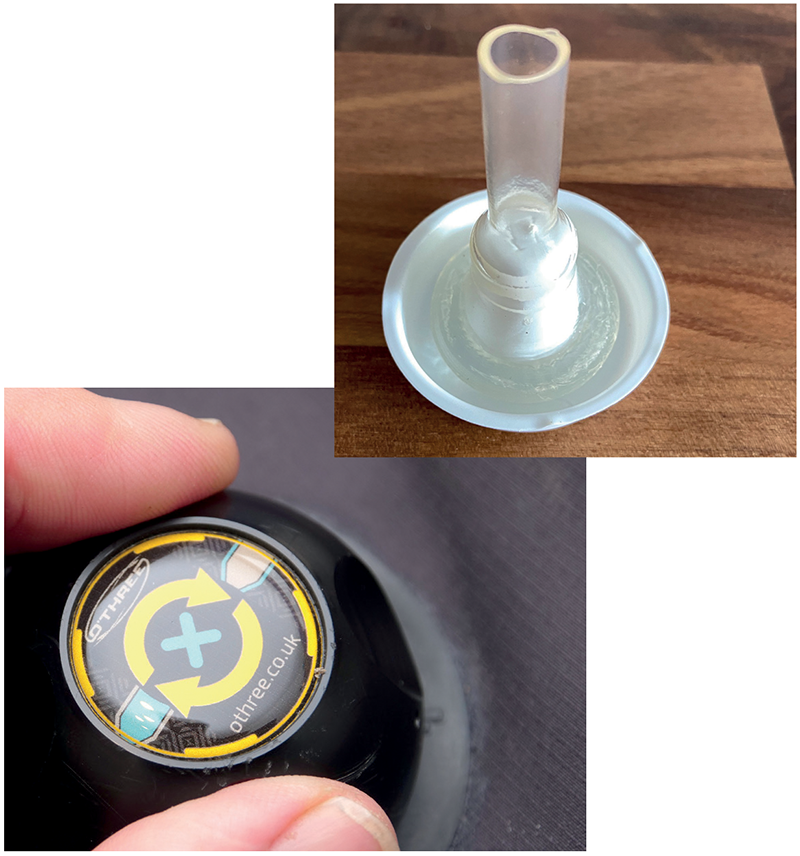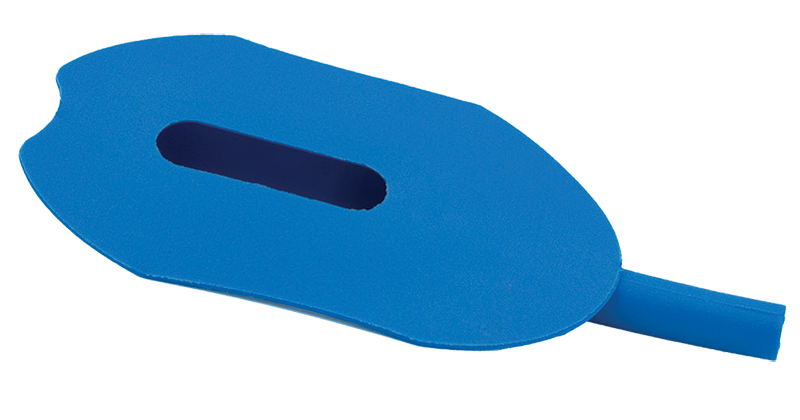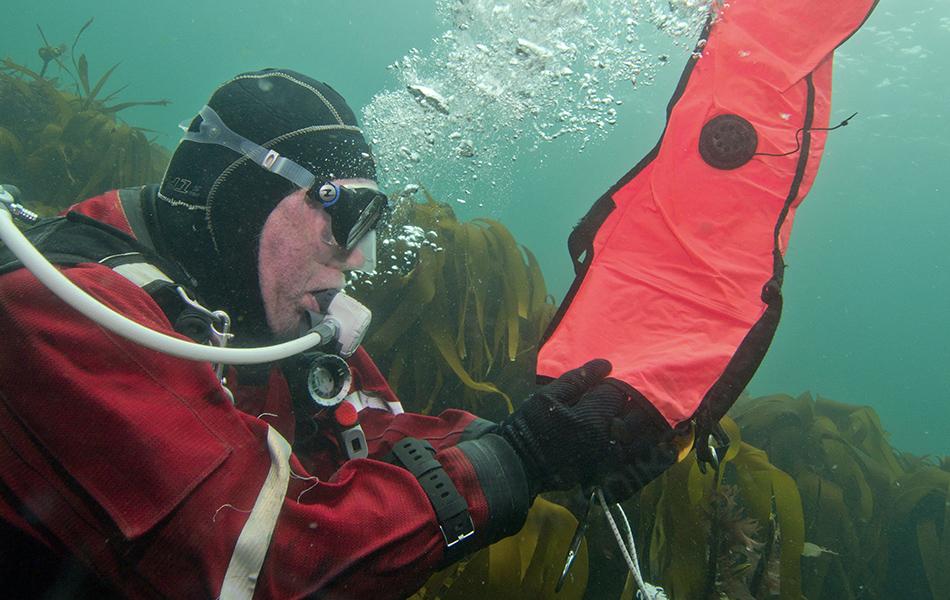
It comes to us all, at some stage in our diving. The limiting factor isn’t how long your gas lasts, or how cold you are getting, but how long can you last in a drysuit when you are busting for a pee?
This can be brought on by a number of factors, including needing to go more often as you get older, extended periods in the water as your diving gets deeper and longer, or a medical condition. You may have spotted divers wandering around with a strange round, black thing on their inner thigh - this is the exit point of a diver’s urination system, a special fitting that can be unscrewed when in the water and has a simple system of valves to allow pee out, but not allow water in. I am a staunch advocate of the pee valve: if you’re out on a RIB all day, it’s really nice to be able to keep hydrated without worrying about climbing out of your suit on a rocking boat, and asking everyone to look the other way. Anyway... the complexities of routing the contents of your bladder to the open sea are a matter for delicate discussion, so at this point, readers of a delicate disposition may choose to turn to one of the articles on pretty fishes or rusty wrecks. Fair warning.
if you’re out on a RIB all day, it’s really nice to be able to keep hydrated without worrying about climbing out of your suit
The man’s perspective by Alex 'banana' Warzynski

The gentleman diver comes naturally equipped with a convenient bladder connector built-in at birth. For ladies, this is not the case, so a different solution is required, as my colleague Sam Clarke will explain. For the men, there are a couple of options. The most common is to use an external condom catheter, a thicker version of a normal condom that comes with a band of glue on the inside and a spout at the end. They are supplied by various companies, all of whom are used to divers calling them up and explaining that they would like a size selection pack and the infamous ‘wang measurer’, a piece of card with semi-circular cut-outs on it with which you measure yourself. You can even print them off yourself on the office printer on some card and cut out the shape when everyone has gone home. It’s best to go a little bigger if you’re between sizes. Ideally go for the ‘wide-band’ type that has extra glue on it for a really secure fit. I’ve tried lots of different brands and my favourite is the Bard Care Clear Advantage Spirit (style 3). It comes with a moulded bit just before the spout that makes fitting a doddle; the silicone is breathable for extended wearing, and the adhesive wicks moisture to minimise skin irritation.
Fitting the condom catheter is something not to be done in a hurry in the rocking, cramped toilet of a boat. It’s best done before you go out, so you have plenty of time to take things nice and slowly. Some preparation is required before the trip - a short buzz cut in the general area, followed by the very careful use of a razor or some Veet to leave the old feller without any straggling hairs will make removal later much less painful as otherwise your eyes will be watering. ‘Shaved to the base’ is a phrase that is fun to try and get into presentations at work. The trick with fitting the thing, is to make sure the sticky bit on the inside doesn’t stick to itself and prevent the pee exiting where it should. Once you have started, then just fully unroll all the way. Then squeeze and hold for 20 seconds all the way round to activate the glue. A bit of stretching and pulling might be needed to ensure it’s completely unrolled and is fully in place. Once on, the nozzle on the end is usually a little long, so might need a careful trim with some scissors, or you can do this before fitting. A brief ‘test pee’ to make sure all is in place is a good idea. It also wets any stray glue on the inside and prevents it sticking together.
The other option for men is the He-wee, a reusable system where a seal is made like a little drysuit neck seal to the base, providing a sealed pocket. It’s important that the correct size is obtained, as it is possible, as one diver in our club found out, to end up in hospital with a worryingly numb and purple part of your body if the blood supply is restricted.
The woman’s perspective by Dr Sam Clark

It’s the morning of your days diving. You grab your breakfast, along with a brew. Do you then think, that has to be the last drink until the diving is done and you’re back on dry land? That worry of needing a wee, having to strip off your drysuit and undersuit to your knees; then the dreaded balancing on the back of the RIB, hanging over the edge hoping that the swell and rocking boat don’t conspire to throw you overboard. The thought of a nappy is just too much, knowing it’s uncomfortable when wet and just won’t hold enough for you to stay adequately hydrated throughout the day. What alternatives do we have? In my experience, the She-P has revolutionised those bathroom issues.
The She-P is a soft silicone reservoir with flexible wings that allow it to adhere to the skin, and an output tube. All this leads to a good seal, allowing for comfortable and easy urination. There are two versions, the She-P Classic –available in various colours – and the She-P 3.0, which is even softer than the classic, has a longer front, a scalloped shape back, and anatomically designed sides. The She-P is easily installed in just a couple of minutes at the beginning of the day, and a small amount of preparation the day before. The preparation is simply shaving in order to allow a good seal. You can choose to just shave the area where the wings adhere, or you can just shave the whole area. I 100 per cent recommend shaving – pulling hairs when removing the She-P is not fun! In the morning, spray the She-P with medical glue; after 30 seconds the glue is tacky and the She-P is ready to be put in place. Press and hold, getting that good seal and one minute later you are good to go! Some people like to wear two pairs of thongs (one each side of the output tube) for extra security to hold it in place, but I just wear a pair of cycling shorts. It’s definitely worth practising placement until you’re confident you’re in the right position to have no leaks and flow freely. Now your She-P is on and ready to go, it needs to connect to the pee valve, which usually sits on the inner thigh. The output tube connects to some hosing which routes upwards and then loops down (avoiding any kinks in the hose), connecting to the pee valve tubing via a quick disconnect. This allows for convenient donning and doffing of your drysuit.
After a great days diving, you’ll be needing to do a little post-dive care. Remove the She-P by pulling off steadily. Hygiene is essential to avoid infections, flush the She-P with lots of fresh water. A wash with warm soapy water, followed by another flush with fresh water and allow it to dry. There are adhesive removal wipes to help remove any leftover glue, if you so wish.
So - happy peeing... and fingers crossed you won’t need your legs crossed.
The full version of this article appeared in June’s Scuba Magazine (members only).

 Author: Alex (Woz) Warzynski | Posted 02 Oct 2022
Author: Alex (Woz) Warzynski | Posted 02 Oct 2022



